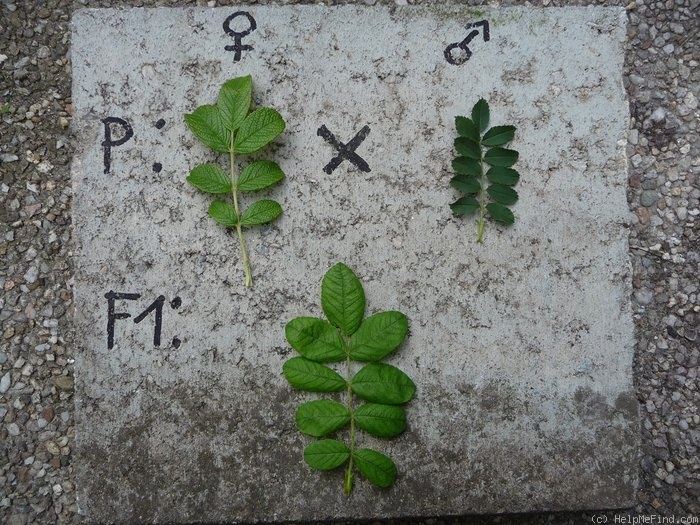|
|
'AS-07/04-01' rose Description

Photo courtesy of Arno
Bloom:
Apricot blend, salmon-yellow , light brown , cream . Single (4-8 petals) bloom form. Once-blooming spring or summer.
Growing:
Disease susceptibility: disease resistant, susceptible to blackspot , very mildew resistant, very rust resistant.
Breeder's notes:
There is already a thread for this crossing on the RHA Forum site:
http://www.rosebreeders.org/forum/read.php?2,30065,30065#msg-30065
The flower is of a salmon colouring with a small orange base at the petals!
The reverse of the petals is more of light pink, the upper side more of light yellow ... .
For me it was interesting to see, that the yellow colour of Golden Chersonese is not completely inherited in the descendents.
I supposed this, as there seem to be different (at least two) traits of yellow, - one light yellow and one deep yellow. Sometimes the yellow traits are mixed in my view - as it can be seen for Golden Chersonese. I supposed that maternal inheritance of traits might play a role here.
1.) The deep yellow trait from Rosa ecae seems to be inherited only via maternal pathways ... if one takes deep yellow influenced roses as mother plants, - and not as pollen parents like here (so for deep yellows its like a chromoplast inheritance, not a classic mendelian inheritance) than it should be successfully inherited.
2.) The light yellow trait that can be transferred via pollen (as in Rosa hugonis or Rosa xanthina hybrids) - as one can see here in this cross!
So: For me it was more a testing for these "truths of traits". That was the reason for me why I did this crossing. If the syblings will flower one knows more. So far it seems that I was right. The question was only how to get the right parents for learning more about the possibly diffferent inherited traits for the yellow colour in roses!
And so this was my suggestion and solution for that problem: I took the existing white form of Rosa rugosa 'alba' as a very well known fertile sort of "canvas" for the inbread yellow traits - and the outcome is nearly what I have expected.
Only the salmon touch in coloration was a bit surprising to me ... .
Further expectations: It will be now also very interesting to see how the plant and its syblings and sisters further develop, still this one here its a pretty compact and dense bush (only once flowering in spring).
Its not blackspot resistant, but mildew resistant. ... Never seen other diseases on it. Never sprayed poisons on it. (What doesn't come through dies in my garden anyway.)
Patents:
Patent status unknown (to HelpMeFind).
Notes:
This is a plant out of a semi-species crossing. Golden Chersonese is a hybrid from at least three wild rose cultivars, so SOME traits will show a spectrum of variation in the further F1 Hybrids coming up in the next seasons.
But: If my thesis from above is right, the remarkably different two traits for deep and light yellow colour ranges should NOT be mixed in these variations for this direction of the cross.
My expectation is: Only the light yellow trait should be visible in variations in the hybrids, if they show yellow flowers.
And: I believe, that the deep yellow from Rosa ecae is only maternaly inherited and never via the pollen parent.
So it should not occur in hybrids of that cross if one did it in this direction, with Golden Chersonese as a pollen parent.
|